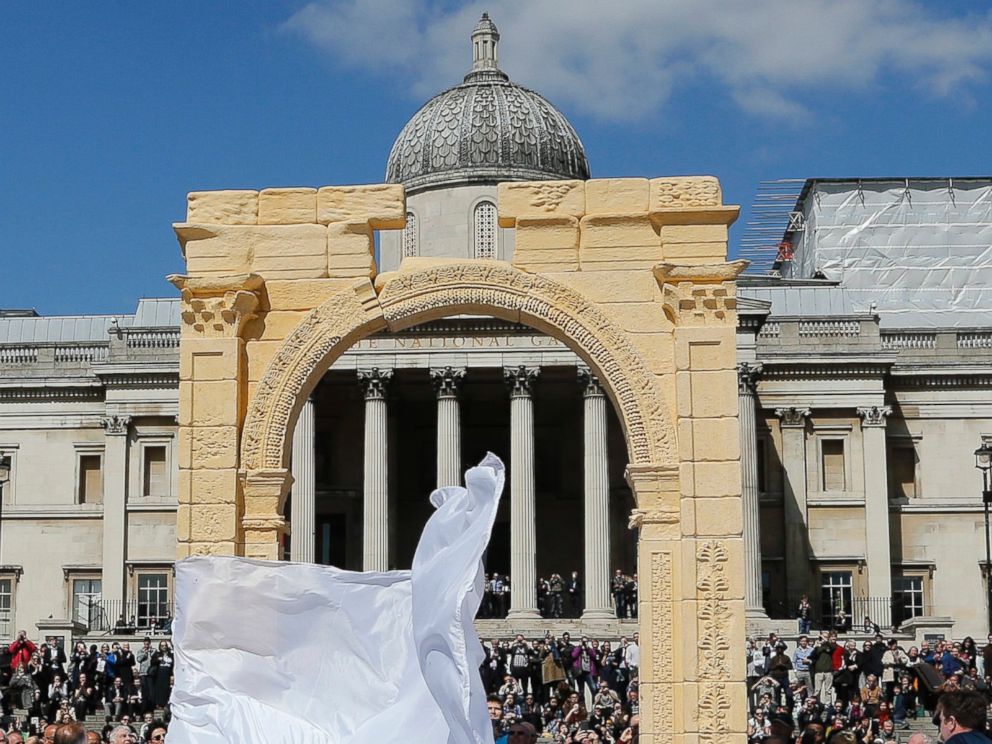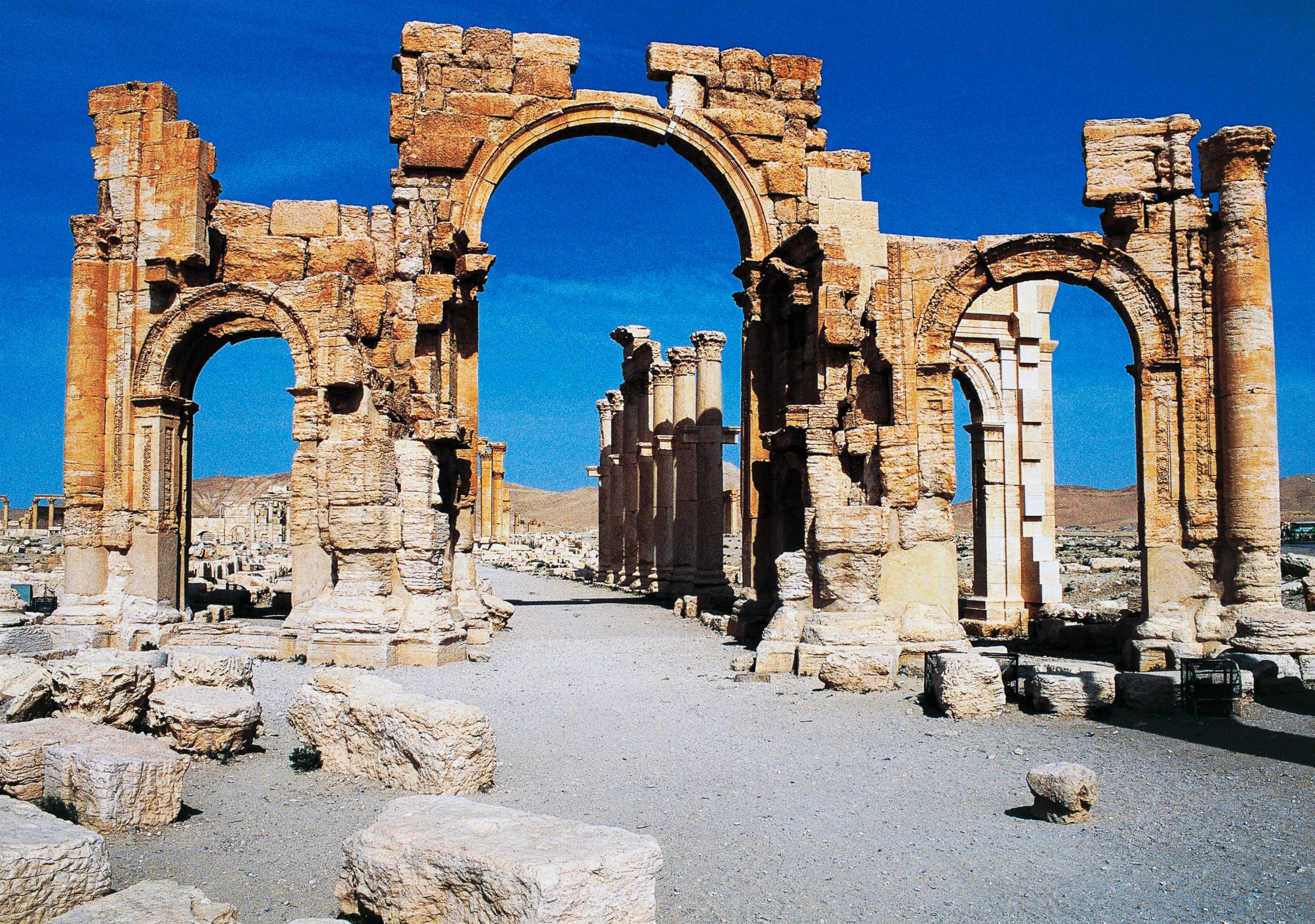Historic Syrian 'Arch of Triumph' Destroyed by ISIS, Recreated in London
A replica of the ancient "Arch of Triumph" in Syria now stands in London.
— -- A 2,000-year-old arch, destroyed by ISIS in Syria, has been recreated in London's Trafalgar Square.
The "Arch of Triumph," located in the historic town of Palmyra, was destroyed by ISIS in October, after militants captured the city last spring.
Syria's director of antiquities, Maamoun Abdulkarimm, who was present in London for the installation on Monday, called the replica an "action of solidarity," according to the BBC.
The replica of the ancient arch was made of Egyptian marble in Italy by Oxford's Institute of Digital Archaeology (IDA) using 3-D technology.
It stands 20 feet tall, weighs 11 tons, and took six hours to construct.
“No one would have seriously considered leaving London in ruins after the blitz," Roger Michel, the director of IDA, told The Guardian, "Monuments -- as embodiments of history, religion, art and science -- are significant and complex repositories of cultural narratives. No one should consider for one second giving terrorists the power to delete such objects from our collective cultural record. When history is erased in this fashion, it must be promptly and, of course, thoughtfully restored.”
The replica will stand in London for three days before moving to Dubai and New York, officials said.
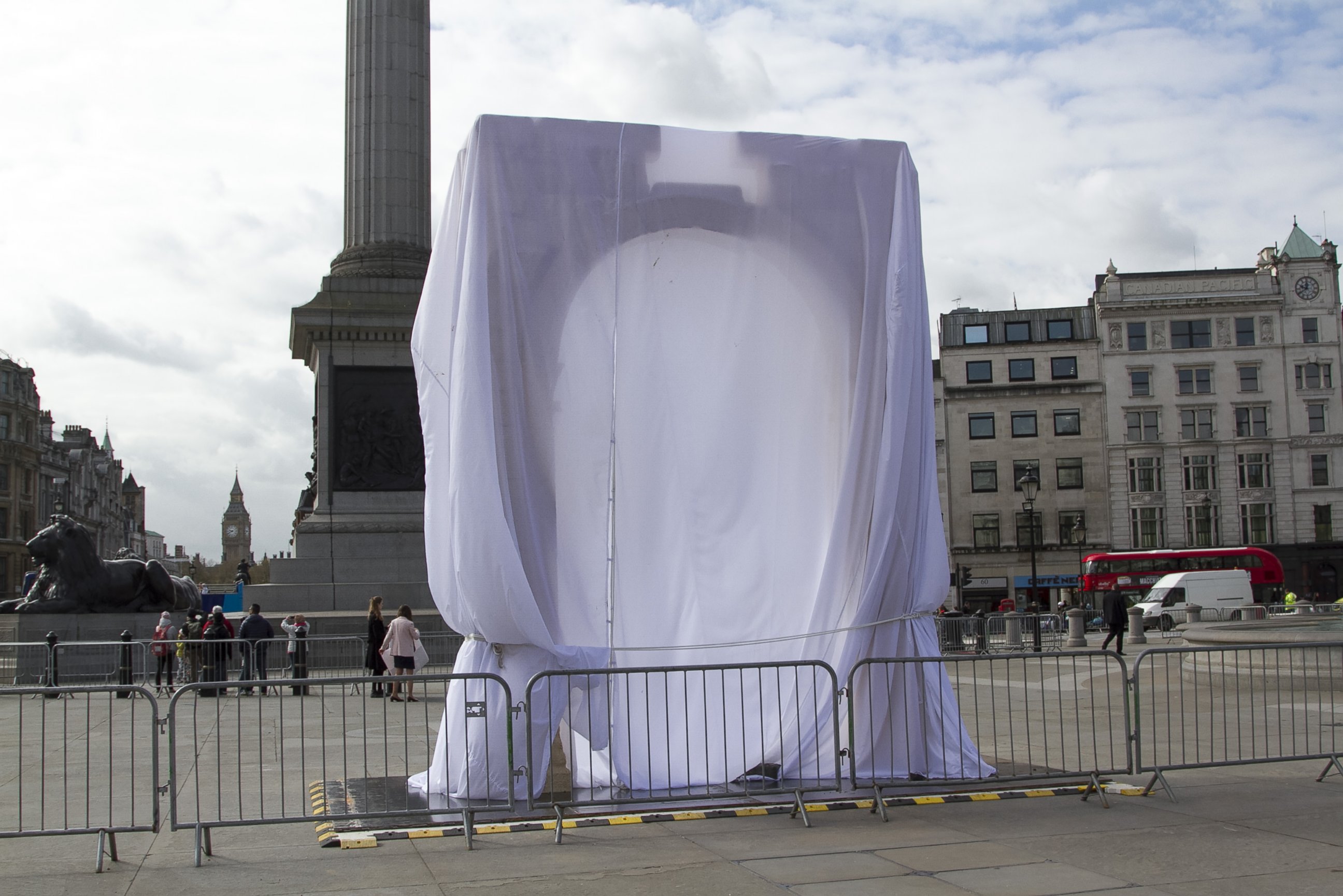
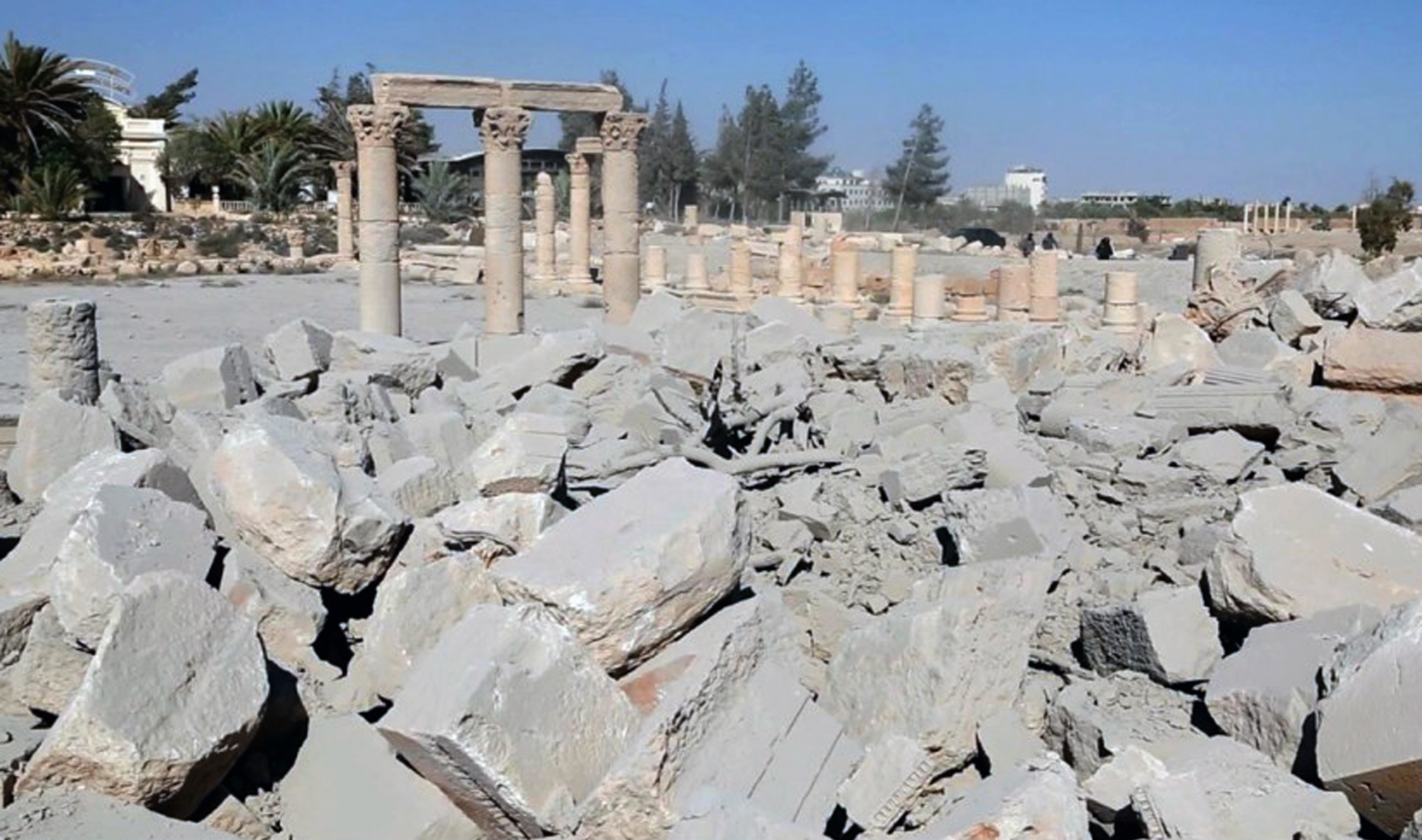
Syrian government forces regained Palmyra in late March.
Michel said the replica is intended to be placed in Palmyra near the original arch sometime next year, according to the BBC.
Abdulkarim visited the site one week after its liberation from ISIS and told the BBC that 80 percent of the original arch remains intact.
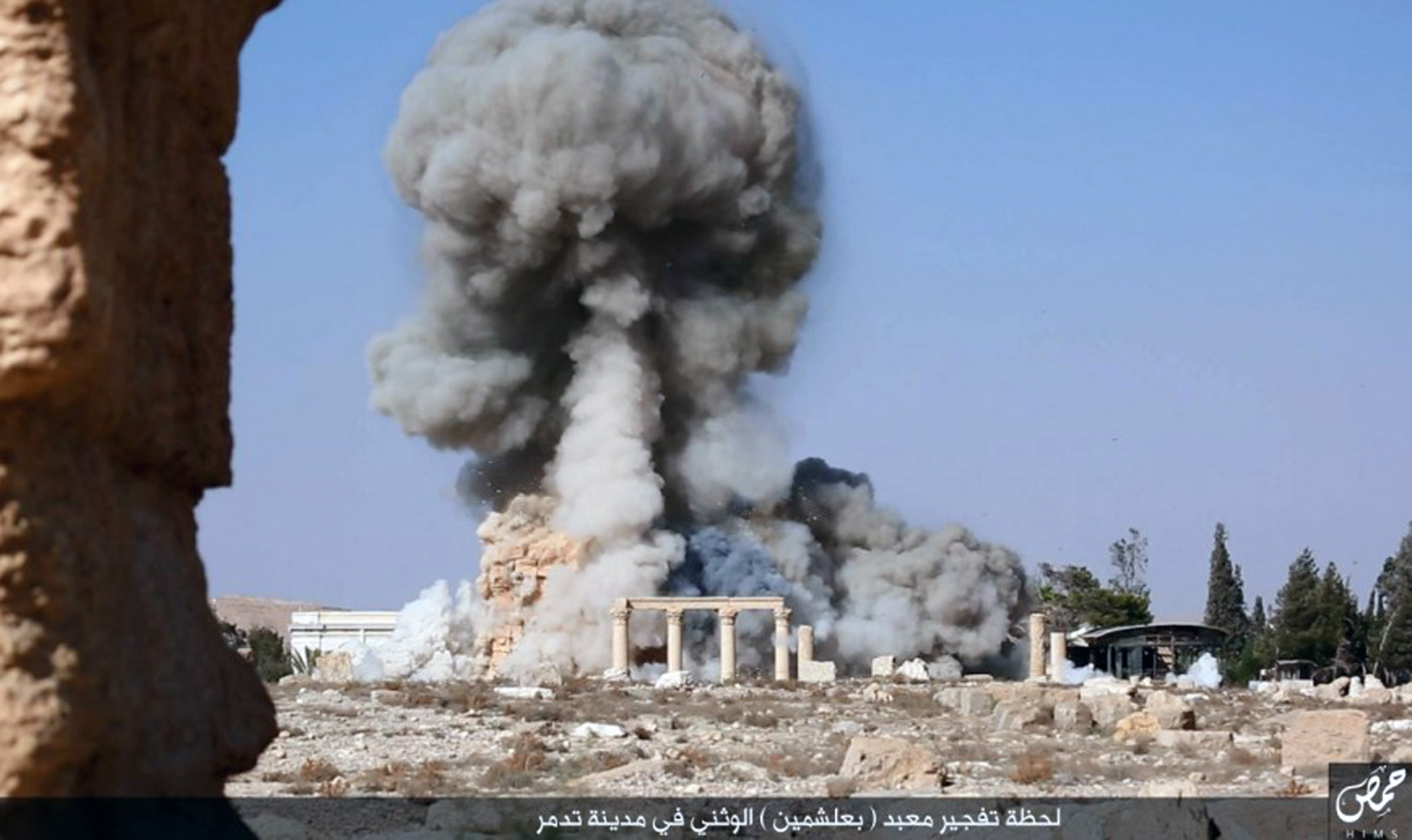
"We can never have the same image as before ISIS," Abdulkarim said. "We are trying to be realistic. But what we want to do is respect the scientific method and the identity of Palmyra as a historic site."
UNESCO, the United Nations organization responsible for identifying significant cultural landmarks around the world, says all six of the Syrian UNESCO World Heritage sites have been destroyed or damaged since the war began in 2011.
